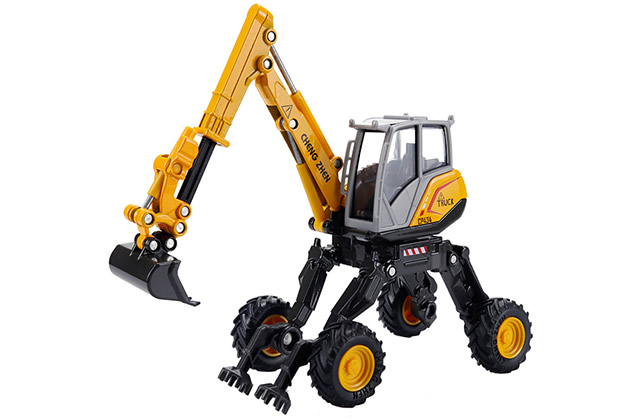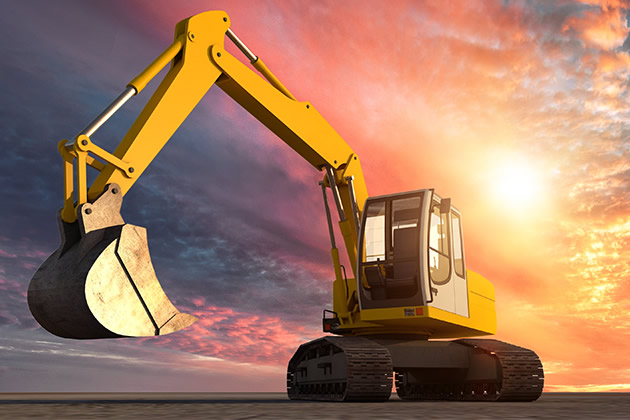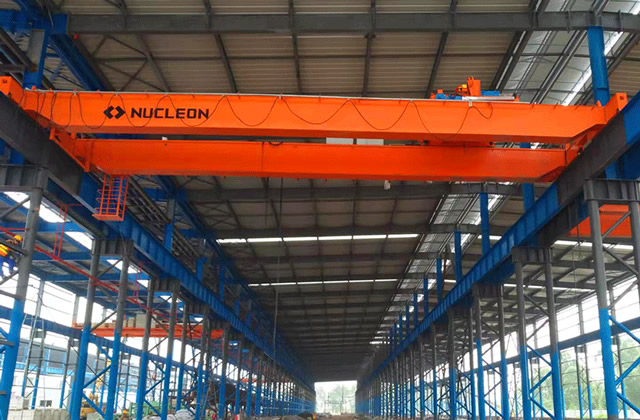The structure of a walking excavator
The walking excavator is an all-terrain multi-functional excavator and multi-tool and multi-functional platform. It consists of working device, traveling device, getting on and off the car, slewing mechanism and hydraulic system, etc. It uses four legs (it can also have running wheels) to support the whole machine. The four legs are operated independently by four hydraulic cylinders. The length and support position of each leg can be adjusted in three directions: longitudinal, transverse and vertical, which greatly improves the applicability and stability of the excavator and is very suitable for excavation operations on uneven and narrow sites.

The traveling device is the chassis. The chassis of the walking excavator is composed of multi-directional joints, steering hydraulic legs, and steering devices. It is composed of a hydraulic drive motor and tires. Its function is to support the weight of the excavator and convert the power transmitted by the hydraulic drive motor into traction to realize the walking of the entire machine.
The working device is the main component of a walking excavator, usually including a box-type telescopic arm, cab, and 360-degree rotating platform. In addition to digging holes, trenching, and loading, the working device can also perform simple site leveling work.
What are the characteristics of a walking excavator?
The walking excavator is a new generation of intelligent products. It can travel through mountains and rivers as if it were on flat ground, and is flexible and maneuverable. It is a This excavator can be used in plateau and plain areas and can adapt to various terrains. The walking excavator adopts a combination of walking and wheel drive, and can have all-wheel drive, all-wheel steering, and wheel-leg combination. It not only has a strong sense of shock in appearance, but also has high technological content, breaking through the development model of traditional engineering machinery.
The working form of the walking excavator is roughly the same as that of the traditional crawler excavator. The main differences are It is the traveling part of the chassis. It overcomes the shortcomings of traditional crawler excavators that cannot work in complex terrain, such as driving on large-angle mountains, high vertical obstacles, rivers, swamps, snow-capped mountains, railway tracks, etc. The independent multi-degree-of-freedom steering hydraulic outriggers are used for free angle adjustment to compensate for the uneven height difference of the terrain, so as to achieve the purpose of driving, walking and construction on large-angle sloping terrain. Utilizing the cooperation of the box-type telescopic arm digging arm and the independent multi-degree-of-freedom steering hydraulic outriggers, it can climb and cross vertical obstacles of several meters, and walk and work in rivers and swamps. Equipped with a hydraulic wire rope winch, it can be used in large-angle mountainous areas (with relatively loose geology). During operation, the wire rope is fixed and the hydraulic support claws are fixed on the ground to ensure safe operation.It can also be equipped with a hydraulic motor drive to achieve short-distance independent transitions, equipped with quick-change joints, and can be installed with hydraulic drilling devices, hydraulic breakers, grab buckets, hydraulic shears, pile drivers, and small tunneling heads to form a multi-functional platform. When moving over long distances, the excavator does not need any lifting equipment and can climb up and down the transport vehicle by itself. It is particularly convenient to move the construction site and the transfer cost is low.
If the website content violates your rights, please contact us to delete it。








